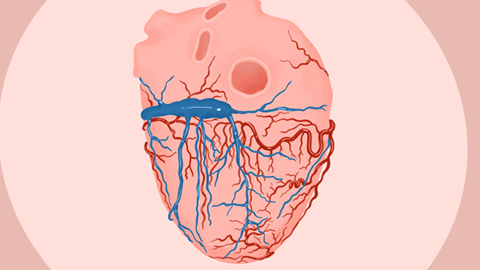How is foot vascular blockage treated?
Generally, foot vascular blockage may be caused by prolonged sitting or standing, decreased vascular elasticity due to aging, lower extremity varicose veins, hyperlipidemia, lower extremity atherosclerotic occlusive disease, and other factors. It is recommended to seek timely medical consultation to determine the exact cause and, under a doctor's guidance, improve the condition through general treatment, medication, surgical treatment, etc. A detailed analysis is as follows:

1. Prolonged Sitting or Standing: Maintaining the same posture for extended periods impedes venous return in the lower limbs and slows blood flow, making thrombosis and subsequent blockage more likely. It is advisable to get up and move for 5-10 minutes every hour, perform toe-raising and knee-bending exercises to promote lower limb blood circulation, and wear medical compression stockings daily to assist venous return.
2. Decreased Vascular Elasticity Due to Aging: With advancing age, thickening of the lower limb vessel walls, reduced elasticity, narrowing of the vessel lumen, and increased blood flow resistance can easily lead to blockages. Regular lower limb vascular ultrasound examinations are recommended. Engage in mild physical activities such as slow walking and tai chi, and reduce the intake of high-fat and high-salt foods in the diet to delay vascular aging.
3. Lower Extremity Varicose Veins: Damage to the venous valve function causes poor blood return, resulting in blood pooling in the leg veins. Long-term pooling can lead to thrombosis and blockage, manifesting as visible bulging veins and leg aching. Patients should avoid prolonged standing or sitting, elevate the lower limbs during rest, and use medications such as Venoruton tablets, Diosmin tablets, and Calcium Dobesilate capsules as directed by a physician to improve venous circulation.
4. Hyperlipidemia: Excessively high levels of cholesterol and triglycerides in the blood deposit on the walls of lower limb vessels forming plaques, progressively narrowing and blocking the vessels. Patients should adjust their diet to reduce consumption of fried foods and take lipid-regulating medications such as Atorvastatin Calcium tablets, Rosuvastatin Calcium tablets, and Simvastatin tablets as prescribed to control blood lipid levels and reduce plaque formation.
5. Lower Extremity Arteriosclerosis Obliterans: Atherosclerosis of the lower limb arteries leads to vascular narrowing or occlusion, reducing blood flow and causing symptoms such as coldness and pain in the lower limbs. Patients must quit smoking and drinking. In cases of severe blockage, percutaneous transluminal angioplasty can be performed to dilate the narrowed vessels and restore blood flow.
In daily life, choose loose and comfortable shoes and socks, avoid wearing tight footwear that compresses the vessels, eat more fiber-rich foods such as celery and oats, and manage body weight. Maintain a regular sleep schedule, avoid staying up late, and protect lower limb vascular health through comprehensive lifestyle management.





